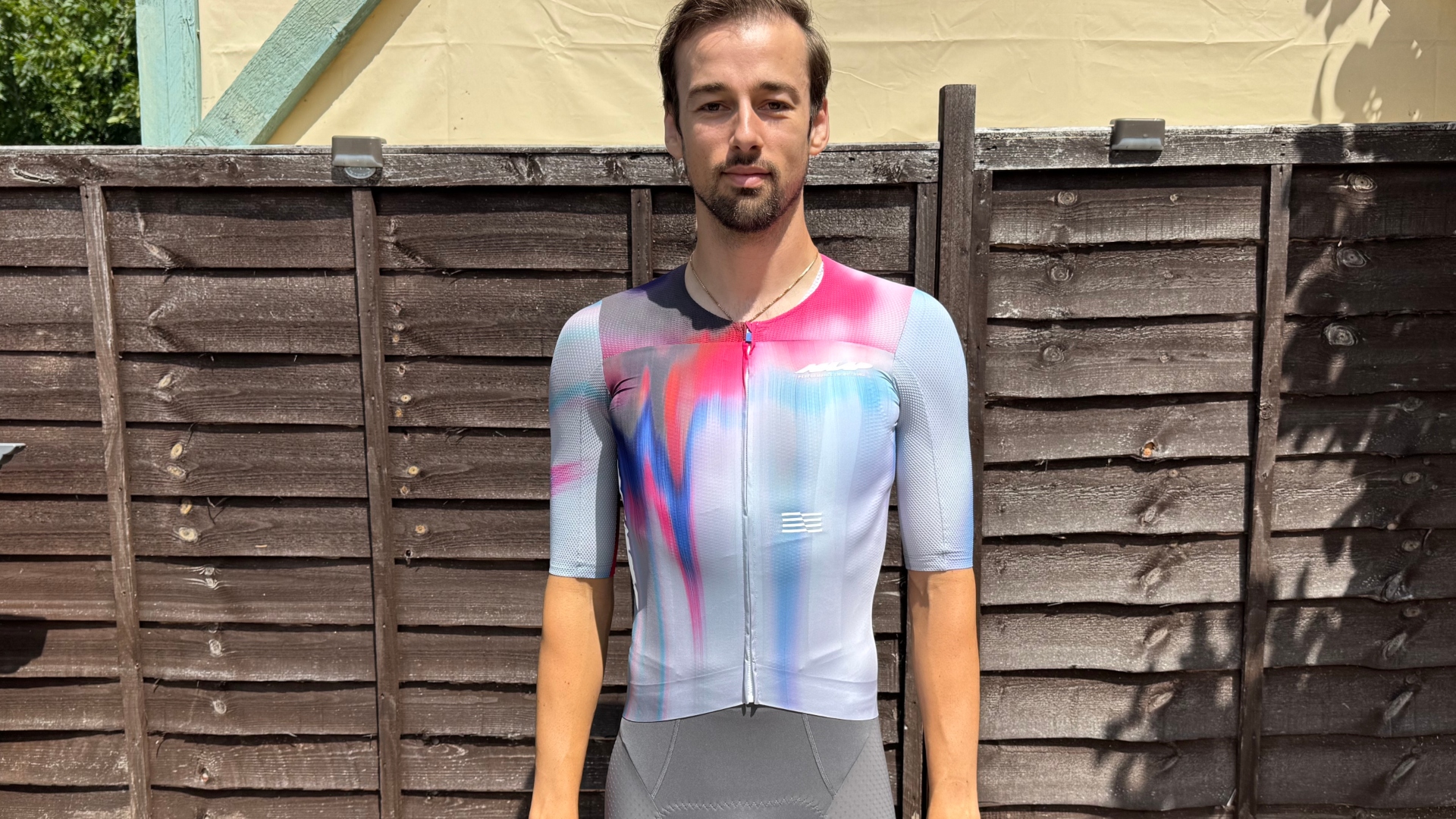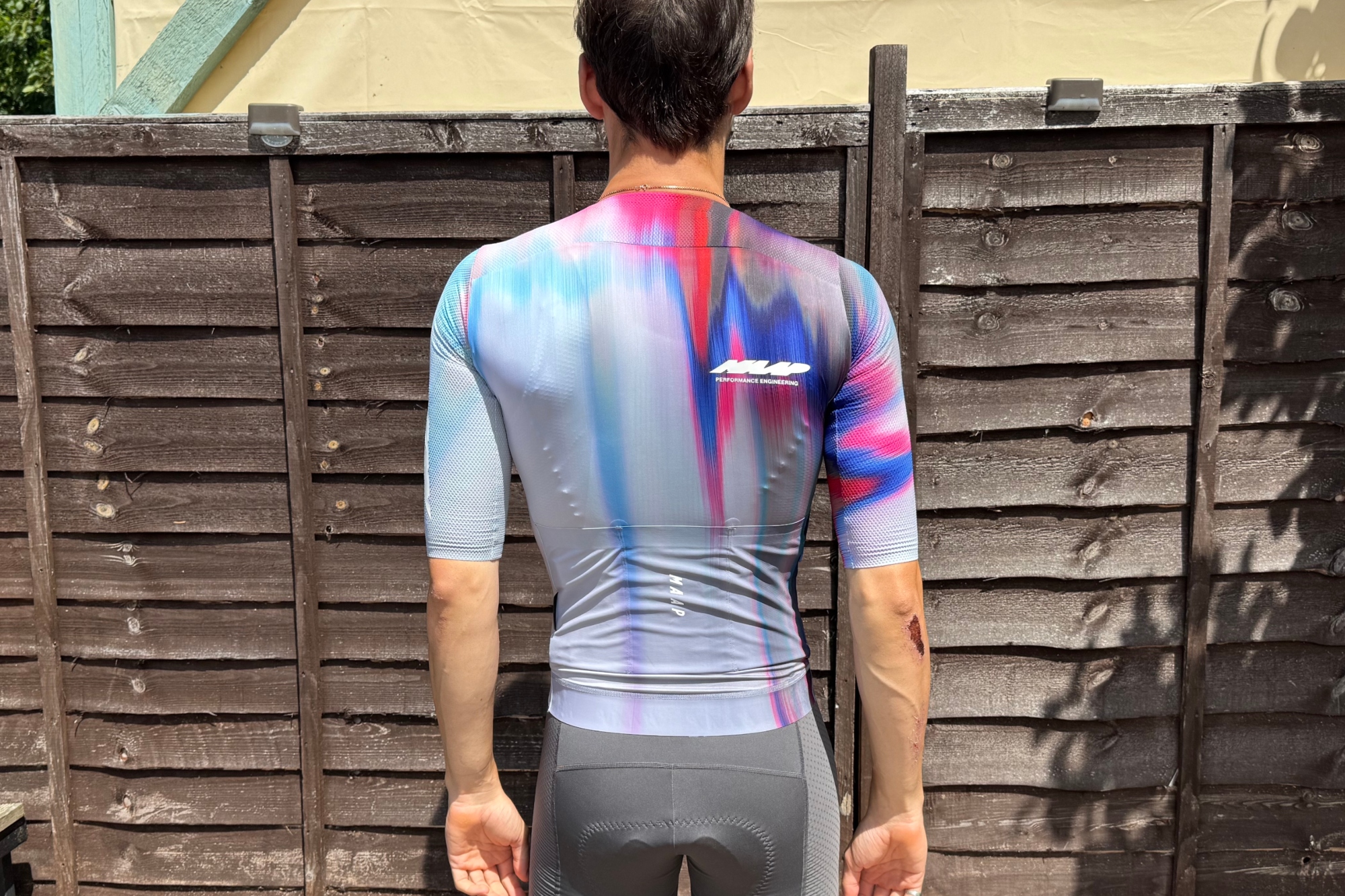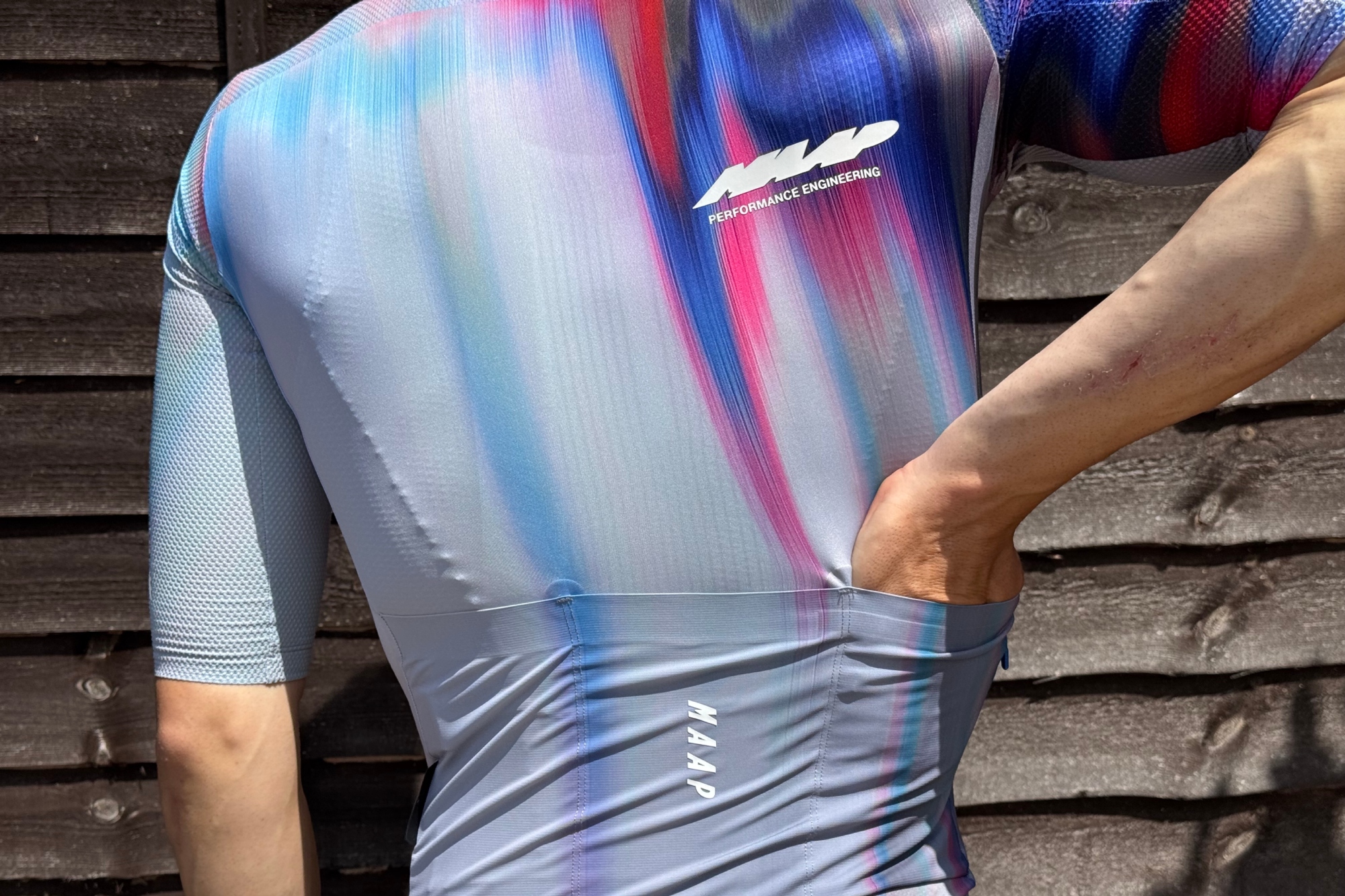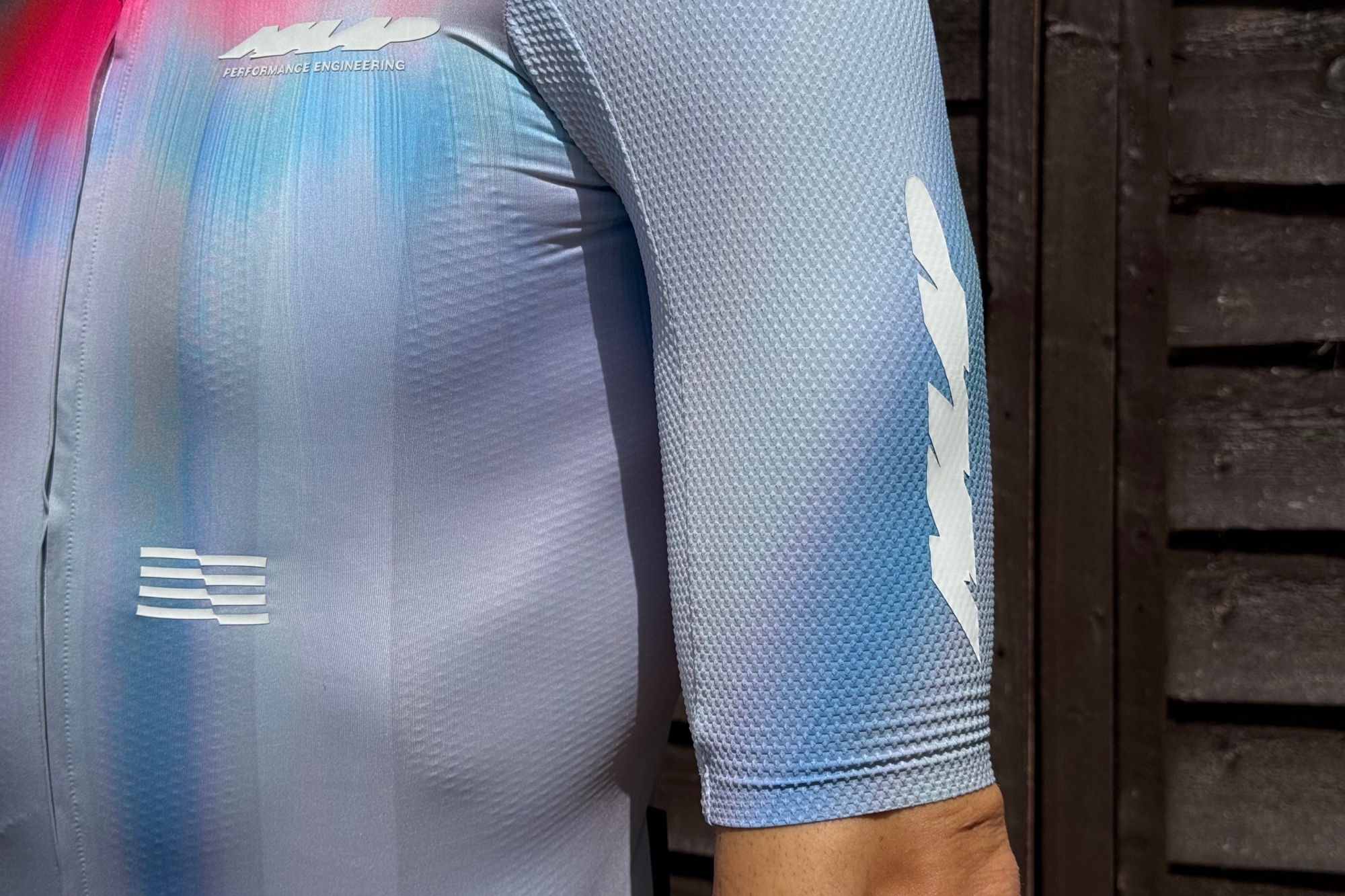MAAP Pro Race jersey Review: Clearly lots of style, but no aero claims to back up the substance
Cut with a race fit, it's both eye-catching and comfortable but does come with a high price tag

The MAAP Pro Race jersey fits well, looks brilliant, and has a lot of great features making it a really good jersey. However, for an aero jersey, it lacks any data to support the aero credentials and is nearly £200 making it quite expensive.
-
+
Comfortable fit
-
+
Good sized pockets and valuables pockets
-
+
Fun range of styles
-
+
Good quality reflective detailing
-
+
Race fit yet comfortable
-
-
Very expensive for a jersey, but not dissimilar to aero jerseys
-
-
No aero data to support claims
-
-
Breathability is behind some aero jerseys
You can trust Cycling Weekly.

MAAP states that the Pro Race jersey has been inspired by the brand’s collaboration with World Tour squad Team Jayco–AlUla and is born of a speed obsession. It's the Australian brand's first proper attempt at a dedicated aero jersey, so lets see how it fairs.

Construction
The Pro Race jersey uses a diamond-textured fabric across the sleeves and top of the shoulders with the aim of reducing turbulence around those areas and maintaining the attachment of airflow. This material and the body are made from a woven stretch fabric, which is designed to have a greater density to avoid friction drag when worn tight while also being moisture wicking for temperature control.
Additional details aimed to improve aerodynamics performance are the low cut and low-profile neck line, and bonded collar, sleeves and hem to reduce bulk and keep a secure fit.
A silicone gripper is used at the rear to provide extra security, while a zip guard at the top of the jersey aims to reduce any irritation around the neck. MAAP has also carried over its new pocket design from the Pro Air 3.0, with streamlined lie-flat pockets with a vastly slimmed down hem at the top for a sleeker fit. Along with the three main cargo pockets is a zip-up valuables pocket.
Across the rear, sides, arms, and front, reflective transfer logos have been placed to provide a 360˚reflective visibility. Some other near features are the use of recycled yarns in the jersey, between 75-85% depending on the fabric panel, and UPF 50+ protection for use in sunny weather. This Solar edition of the Pro Race jersey comes in two colour options, while the Eclipse option adds another three colours. Sizes range from XS up to XXL.

The ride
MAAP tends to excel in the style department and this jersey is no different. Of course this is subjective, but the Solar range of the Pro Race jersey has a great dripping paint aesthetic that I think looks superb. For those who want a more subtle styling, the Eclipse line offers block monochromatic colours.
The fit of the Pro Race is a great progression on MAAPs previous race fitted garments. I have found that the likes of the Pro Air 2.0 in a more race fit, sat too high up my back making pockets difficult to reach, while also being a bit tight around the chest. This updated fit is more accommodating without being at all loose, making the jersey far more comfortable. Raw cut fold-over sleeve cuffs, with the same treatment around the low cut neck, provide secure fitting while limiting any irritation. These fabric folds are partially glued over rather than stitched all the way, so it’s worth being careful with any jewellery which could catch the material. I say this after my watch snagged the cuff of a MAAP Aeon jersey and undid the glued seam, which I had to stitch back up.
The latest race content, interviews, features, reviews and expert buying guides, direct to your inbox!
Another practical feature are the 360˚hem grips, which use small silicone dots to ensure that the jersey stays in place even when the pockets are full. I really like this feature, as often with unevenly loaded pockets, I find jerseys have a tendency to twist around. The downside however is the hem has a tendency to get quite warm due to the thicker material used.
There are more useful features, often forgotten on aero jerseys, that I appreciate. MAAP has added reflective detailing around the jersey to create a 360˚ visibility feature. For early morning or late night fast paced group rides, I really like this addition.
Use of recycled materials and UPF 50+ protection are a nice touch and not often at the forefront of design in performance apparel. Also included is a zip-up valuables pocket, which for me is a must have feature for keys or emergency cash. This also sits externally to the main cargo pocket, whereas the older Pro Air 2.0 jersey fitted this internally, causing keys to dig into your back if positioned poorly. MAAP has also brought over the new flat pocket design introduced on the Pro Air 3.0 jersey, which results in pockets that lie flat with the back in an aim to smooth airflow over this area.
This is, of course, an aero jersey, so it’s a bit of a shame to see MAAP do not include any testing data about the performance of this jersey, even comparatively to its other offerings.
To give this jersey its aero credentials, MAAP has uses the aforementioned diamond dimple across the entire sleeve, also extending over the shoulders and upper back, which aims to reduce the turbulent airflow which comes off the back of the arms, while including it on the shoulders aims to reattach airflow so that it runs down the back. It is designed on sound aerodynamic principles. After all, at the speeds most riders go at, any texturing on the sleeves is better than a smooth surface. However interestingly, it is different to what the sponsored WorldTour squad or gravel privateers use; they use an externally placed rib pattern across the sleeves, which is often one of the fastest designs at speeds of 40-45kph. However, the use of the diamond pattern may result in a faster jersey relatively at lower speeds from 25-35kph. It's similar to what Assos do with its Equipe RSR jersey. It's different from the material used by its sponsored Tudor Pro Cycling team because it found that the pattern was faster at more real-world consumer level speeds.
Given the differences between aero jerseys at lower speeds are small and hard to test without using a wind tunnel, I can only provide subjective data and critical analysis based on the scientific application. As I said, the science behind the design is sound, but it’s a shame to not have any test data to support the theory.
One thing I can say is that the material on the body is a bit warmer than the mesh used on the Pro Air 3.0. It’s more akin to the Rapha Pro Team Aero jersey, which is similar to the new Flaero, but a bit warmer. Although MAAP uses a thin material for the body, so it’s a bit more breathable, it lags behind some other aero jersey competition. Potentially some mesh under the arms and down the sides could help here, but that often has a negative effect on aero performance.

Value and conclusion
When it comes to value, the MAAP Pro Race jersey presents an interesting dilemma. At £190 / $245, this is an expensive jersey with a lot of cheaper alternatives available on the market. However, when looking at the comparative aero jersey market, it is certainly not the most expensive, and if anything sits in the mid-range of price points.
The Rapha Flaero (£200 / $290), PNS Mechanism Pro (£195 / $240) and Santini Redux (£190) all match or exceed the price of the MAAP Pro Race while the Rule 28 One (£180), Castelli Aero Race 8S (£169.99 / $199.99) and Assos Equipe RS S11 (£175 / $220) are not far off in terms of price. The Assos Equipe RSR undercuts them all at £140 / $185, but in part by forgoing a front zip which greatly reduces material and manufacturing costs, but does impact some practical elements.
The issue with the MAAP Pro Race is that it lacks aero data to back up its aerodynamic performance unlike the Rule28 One, and the breathability is not as good as the likes of the Castelli Aero Race 8S or PNS Mech Pro and Rapha Flaero jerseys. Where it does make up some relative performance are the sleeve cuffs which stay nicely in place, a dedicated zip up valuables pocket, great levels of reflective detailing, secure hem, and a nice range of styles.
All told, the MAAP Pro Race is an impressive offering. Yes it's expensive, but is in line with the competition's pricing, and in some cases, undercutting it. The design uses some sound aerodynamic principles, but lack of test data to back up aero credentials is a shame. This jersey also suffers a bit in the high heat compared to some more breathable competition. Where the Pro Race shines though is the addition of several highly practical features. Because of this, it's an aero jersey that I would reach for even on days where speed was not the main focus.
Andy is a Sport & Exercise Scientist, fully qualified and experienced Cycling Coach, Sports Director, Freelance Writer, and Performance Consultant. He spent 3 years riding for a UCI cycling team and 7 years as a BC Elite rider, competing in prestigious events such as the Tour of Britain and the Volta a Portugal.
Graduating with a first-class honours degree in Sport & Exercise Sciences, he continues to pursue his interest in research in the field of Sport Science alongside managing his coaching business, ATP Performance. He also works as a Wind Tunnel operator and Performance Consultant at the Silverstone Sports Engineering Hub, working with individuals, teams, and businesses to optimise performance and develop products.
You must confirm your public display name before commenting
Please logout and then login again, you will then be prompted to enter your display name.
